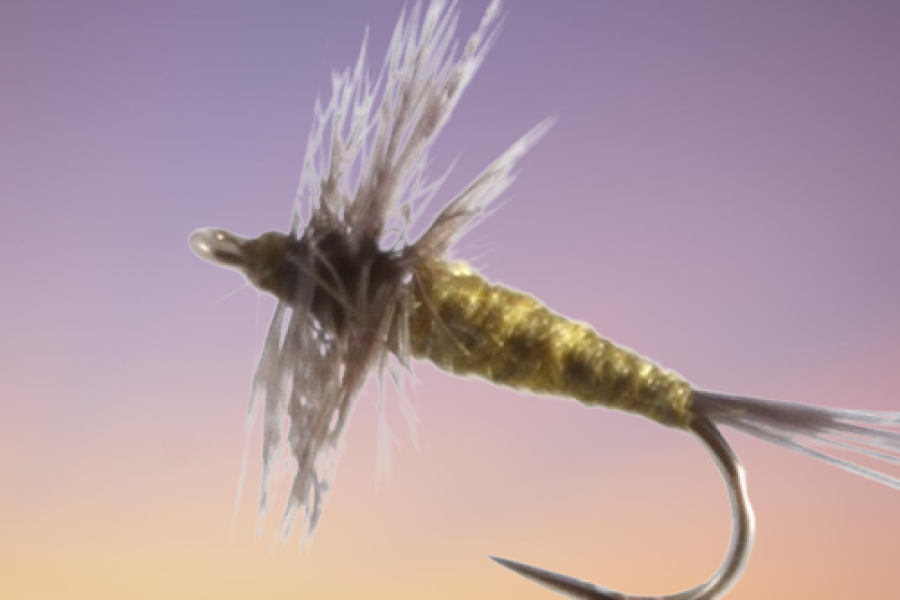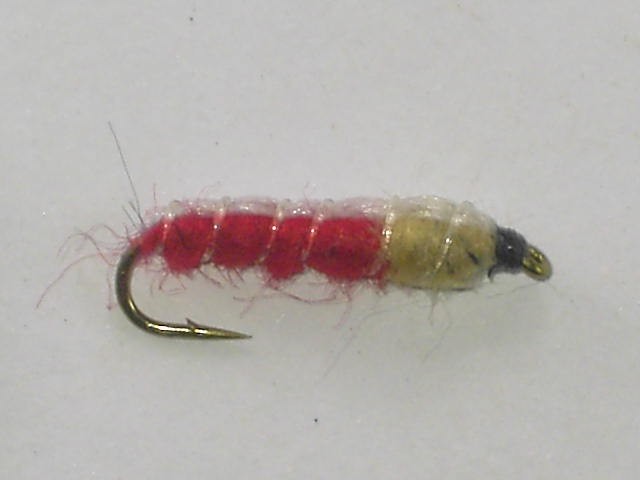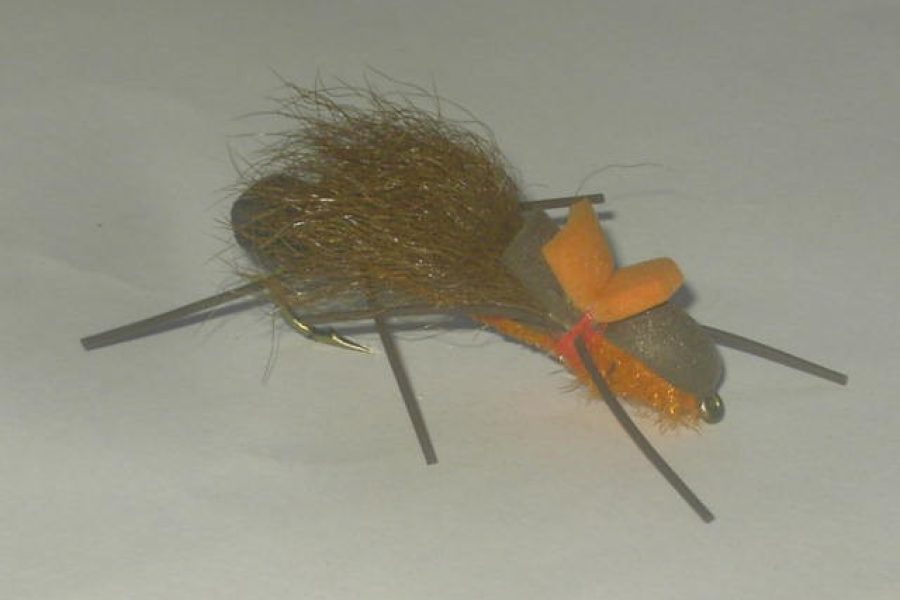Description
Natural Red Nymph: Premium Natural Pattern
The Natural Red Nymph represents a masterful blend of natural imitation and subtle attraction, combining realistic design elements with a hint of red that triggers predatory responses. This meticulously crafted pattern features carefully selected materials that create a compelling natural profile while incorporating subtle red highlights that suggest vulnerability or movement.
Design Excellence and Natural Imitation The pattern showcases sophisticated design elements that precisely mirror natural nymphs. Its carefully proportioned body features natural materials enhanced with red highlights, while the overall construction creates a highly effective imitation of various aquatic insects. The combination of natural appearance and subtle triggering colors makes it particularly effective during both hatches and general prospecting.
Material Selection and Technical Construction Every component is carefully selected for both performance and durability:
- Premium natural dubbing
- High-quality red wire ribbing
- Strategic flash placement
- Durable thread base
- Specialized nymph hook
- Reinforced construction techniques
Strategic Fishing Applications This pattern excels in multiple fishing scenarios:
- Clear water conditions
- Hatch-matching situations
- Various depth ranges
- Different light conditions
- Structure fishing Each environment allows the pattern to showcase its effectiveness.
Seasonal Effectiveness The pattern demonstrates remarkable productivity throughout the year:
- Spring: Major hatches
- Summer: Early morning and evening
- Fall: Pre-winter feeding
- Winter: Midday effectiveness Seasonal adaptations in presentation maximize success.
Species-Specific Performance While primarily designed for trout, the pattern proves effective for:
- Rainbow Trout in various waters
- Brown Trout in clear conditions
- Brook Trout in mountain streams
- Grayling when present
- Various selective feeders
Water Presentation Characteristics Superior presentation qualities include:
- Natural drift in current
- Realistic profile
- Effective silhouette
- Perfect sink rate
- Lifelike movement
Advanced Retrieval Techniques To maximize the pattern’s effectiveness:
- Dead-drift presentation
- Subtle twitches
- Short strips
- Bounce-and-drift
- Deep nymphing methods
Technical Advantages Key performance benefits include:
- Optimal weight distribution
- Natural movement in current
- Excellent hook-up ratio
- Durable construction
- Versatile fishing depths
Line and Leader Configuration For optimal presentation:
- 9-foot leaders standard
- 5X-6X tippet recommended
- Euro nymphing setups
- Indicator rigs
- Traditional nymph rigs
Environmental Adaptability The pattern performs consistently across:
- Various water clarities
- Different current speeds
- Multiple depth ranges
- Various light conditions
- Different temperature ranges
Competition and Professional Applications The Natural Red Nymph has established itself in serious angling:
- Tournament-proven pattern
- Guide’s choice for selective fish
- Professional competition use
- Training pattern for nymphing
- Reliable producer in pressure situations
Size Variations and Pattern Modifications Available in multiple configurations:
- Sizes 12-20 standard
- Various wire colors
- Hook style options
- Weight modifications
- Material variations
Storage and Maintenance Requirements To maintain optimal performance:
- Store in ventilated compartments
- Avoid compression
- Regular material grooming
- Proper drying essential
- Hook point maintenance
Advanced Rigging Techniques Multiple rigging options enhance versatility:
- Traditional nymph rig
- Euro nymphing setup
- Indicator configurations
- Double nymph rigs
- Deep presentation methods
Historical Context and Evolution The pattern’s development reflects:
- Traditional nymph patterns
- Modern material incorporation
- Refined proportions
- Proven effectiveness
- Continuous improvement
Quality Control Standards Each fly maintains strict requirements:
- Precise material selection
- Proper proportioning
- Construction integrity
- Wire placement
- Pattern uniformity
Fishing Location Selection Optimal fishing locations include:
- Riffle sections
- Current seams
- Deep runs
- Tailouts
- Feeding lanes
Weather and Condition Considerations Pattern effectiveness varies with:
- Water clarity
- Light conditions
- Current speed
- Temperature
- Barometric pressure
Presentation Depth Control Achieving proper depth through:
- Weight adjustment
- Line selection
- Leader length
- Current reading
- Drift control
Color and Profile Characteristics The pattern’s coloration provides:
- Natural appearance
- Subtle red highlights
- Proper translucency
- Light reflection properties
- Size-appropriate profile
Movement Characteristics Natural movement achieved through:
- Material undulation
- Current interaction
- Weight distribution
- Profile design
- Wire flash
Durability Features Construction elements ensuring longevity:
- Reinforced wire ribbing
- Quality materials
- Proper proportioning
- Strategic material placement
- Hook point protection
Target Species Behavior Understanding fish response to:
- Natural drift
- Color triggers
- Size selection
- Depth preferences
- Feeding patterns
Water Type Adaptations Effective across various waters:
- Freestone rivers
- Spring creeks
- Tailwaters
- Mountain streams
- Clear rivers
Casting Techniques Specialized casting methods:
- Roll casting
- Tuck casting
- Reach mending
- Line control
- Presentation angles
Strike Detection Recognizing takes through:
- Indicator movement
- Line watching
- Leader reaction
- Direct observation
- Tactile detection
Hook Setting Techniques Proper hook setting through:
- Timing considerations
- Pressure control
- Direction management
- Follow-through
- Fish behavior reading
Fighting Techniques Landing fish effectively:
- Pressure application
- Direction control
- Line management
- Fish behavior adaptation
- Landing strategies
Additional information
| Hook type | Barbed Hooks, Barbless Hooks |
|---|---|
| Hook size | 10, 12, 14, 6, 8 |







